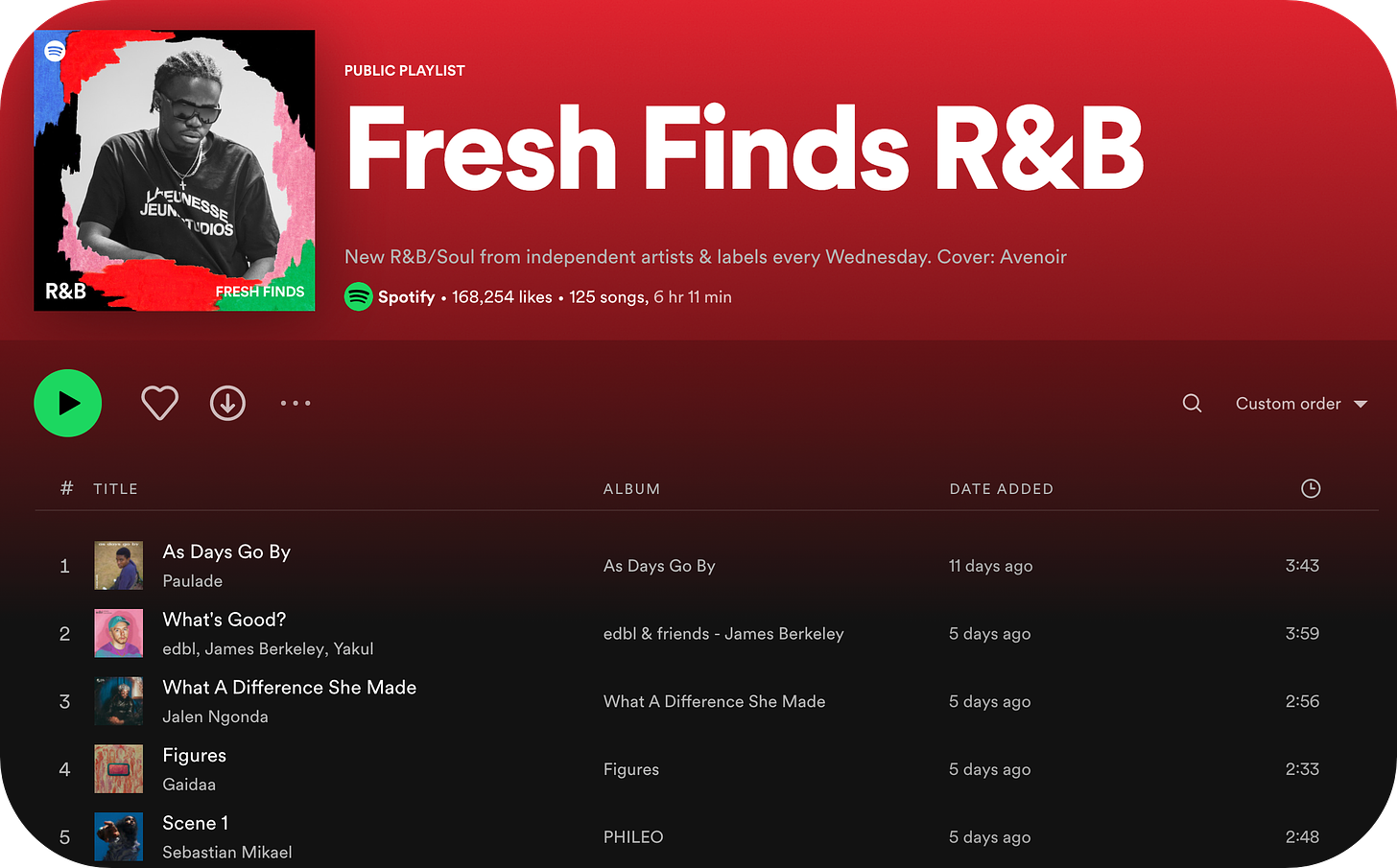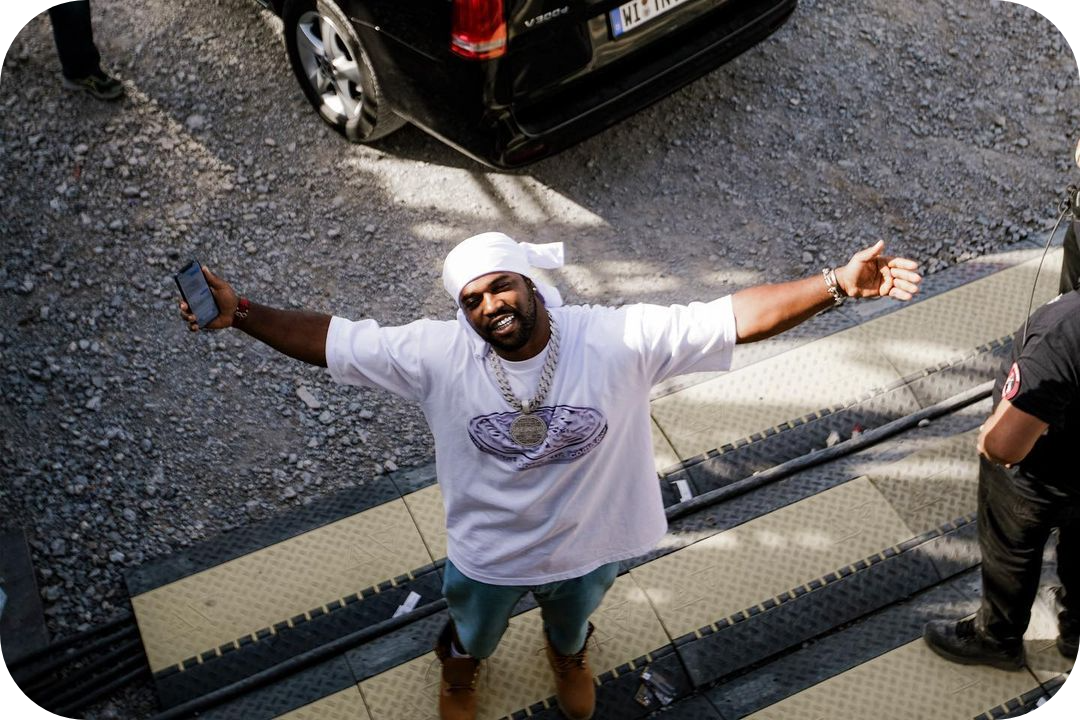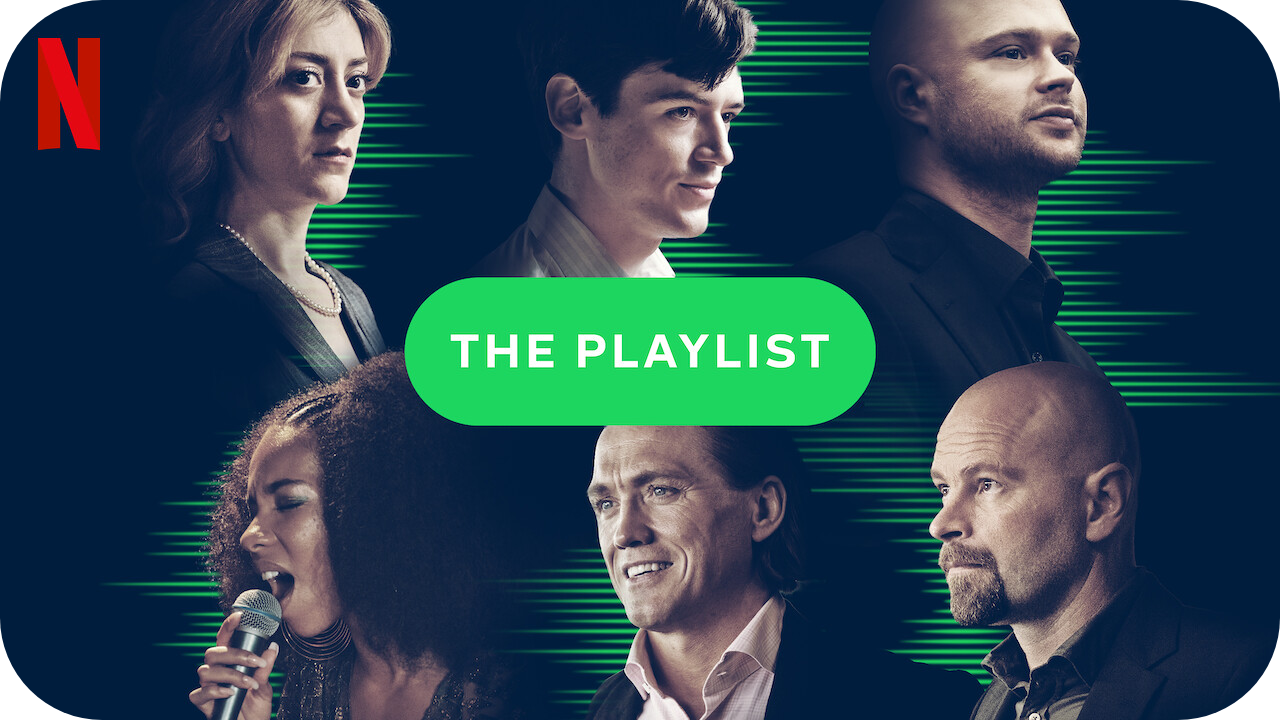Spotify feeder playlists, explained
Spotify’s feeder style playlists are nothing new, but they’re often overlooked and misunderstood
This Week On The Desk
Feeder playlists, explained 📰
Signings ✍🏾
Creative($) of the week 👩🏽🎨
Links 🔗
Feeder playlists, explained
Spotify’s feeder style playlists are nothing new, but they’re often overlooked and misunderstood by artists and their teams when pitching for wider editorial playlist inclusion.
In this article, I’d like to advance the argument that it’s the feeder style playlists (as opposed to the marquee playlists) that most teams should be aiming for when pitching through SFA or their distributor.
First, it’s important to understand the differences between “marquee” and “feeder” style playlists on Spotify. Marquee playlists are considered to be culturally significant playlists like “Todays Top Hits”, “Mega Hit Mix”, and “Party Hits”. Typically, these playlists are reserved for artists on labels (who see the greatest performance) and are refreshed on a weekly basis. The positions on the playlists are finite and competition is intense.
Conversely, feeder style playlists are considered to be playlists like “Fresh Finds Country”. “New Music Friday Country”, and “Next From Nashville”. They’re tailored to independent teams (and distributors not affiliated with major record labels) who might not be ready to be in “Todays Top Hits” but have shown enough promise to be supported by an editor. Feeder playlists were created specifically (by Spotify) to test drive records before they upstream them to larger playlist properties, which can present risk. Feeder playlists are not refreshed with the same frequency and usually give the artists more runway to “show and prove” over a number of weeks.
Feeder playlists were designed for the independent artist in mind.
Spotify’s growing feeder playlist strategy makes sense given the rise of music distributed by artists who are not signed to a record label. Outlets like Rolling Stone and MBW and have documented this trend ad nauseam. It’s an open secret, but major labels are slowly losing marketshare (or streamshare) to independent teams and artists releasing large volumes of music.
In response to losing marketshare, it’s rumored (by CEO’s like Denis Ladegaillerie of Believe) that major labels are lobbying DSP’s for lower payouts for independent artists distributing through self-serves like CD, Baby, Tunecore, and Distrokid. In an interview with MBW, Denis explained:
“The reason major record labels are pushing for this is that they’ve been consistently losing market share for the past five years due to the volume of releases coming out via DIY platforms. They’re trying to find ways of regaining that lost market share through higher value, but I don’t think it’s the right way to do it.”
This is outside the scope of this article, but important to note.
When pitching for editorial support through SFA or a distributor, more artists should focus on these feeder style playlists versus shooting for playlists in another stratosphere like “Todays Top Hits”.
The percentages are higher.
Signings ✍🏾
A$AP Ferg signs with Wasserman
A$AP Ferg has signed with Wasserman Music's Lauren Marker & Cal Callender for worldwide bookings.
Stargate signs with 100 Management
Stargate has signed with Luke Mitzman @ 100 Management.
Creative($) of the week 👩🏽🎨
Valentin Petit - Director/Photographer | Instagram
Links 🔗
The Playlist, Netflix’s Fictionalized Show About Spotify, Is Out Now
TikTok Music could change the game
Music generated by artificial intelligence is coming to the radio sooner than you think
The History of Reggaeton
#WhoeverNeedsToHearThis
Me: All you need is money and talent.
Him: What’s the most important?
Me: The one you don’t have!











